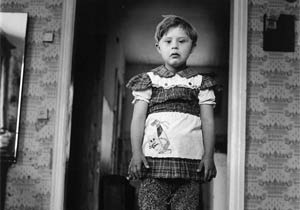
Mayak: Kunashak region
An exhibition of photographs highlighting the human tragedy caused by the world's largest nuclear complex, Mayak in Russia, toured Europe in 2002.
Photographer Robert Knoth visited Mayak and its surrounding villages in 2000 and 2001. His black and white photographs capture the ordinariness of day-to-day life while at the same time reminding us that this is far from a 'normal' community. Knoth's moving portrayal of a community living in one of the most radioactively contaminated places in the world, will be accompanied by testimonies from the people of Mayak collected by humanitarian journalist Antoinette De Jong, who accompanied Knoth.
Until Chernobyl, Mayak was the site of the worst nuclear disaster in history. Unlike Chernobyl, it has received very little attention. The Mayak nuclear facility, until recently deleted from all Russian maps, is the size of a small city and has been used to manufacture plutonium for nuclear weapons and reprocess nuclear reactor fuel for over 50 years.
Since the 1950s, accidental and deliberate releases of radiation have exposed over a quarter of a million people living around the plant to high levels of radiation. Thousands have died and many more live with its debilitating legacy: sickness, sterility and poverty. Now the Russian Government is considering plans to import nuclear waste to Mayak from around the world.
Ramzis Fayzullin, 16, who lives near Mayak and suffers from hydrocephalus, appealed,
"We have suffered from radiation so much that almost every week someone in our village dies from cancer. So, why don't the members of the parliament think well before they permit nuclear waste into the country? Please think about our future,"
According to John Novis, Head of Photography at Greenpeace:
"Robert Knoth's classic 'Soviet style' portraits of these villagers capture the ordinariness of daily life. At first glance they could be family photographs. But just beneath the surface lies the slow suffering of people whose lives have been destroyed by nuclear waste. They are a snap shot of life in the shadow of the nuclear industry - A Half-Life."
Further information:
See the photos on Greenpeace International's Mayak website.
Download our background briefing 'Half Life - Living with the Effects of Nuclear Waste' (PDF format).

